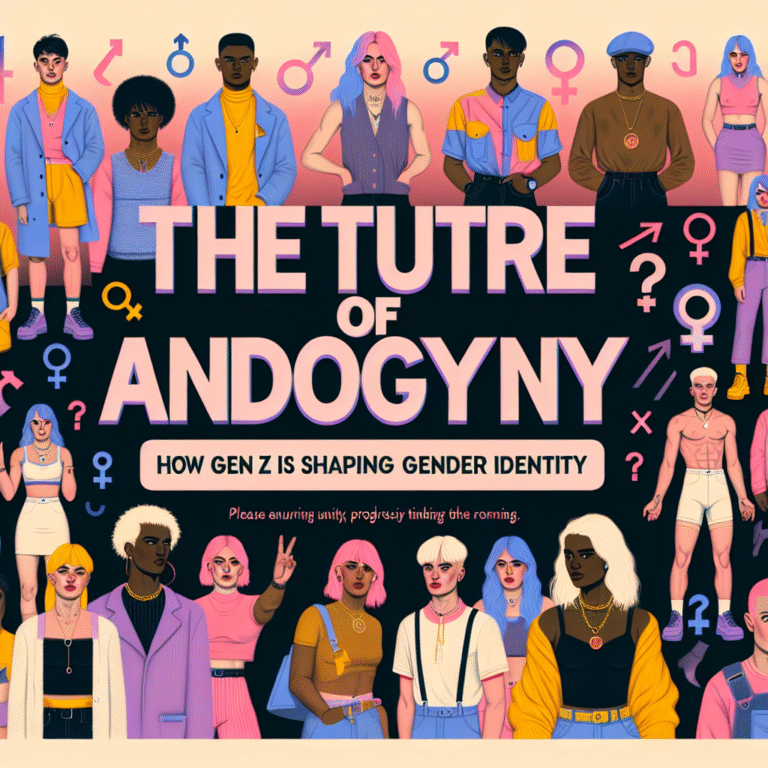
Introduction
In a world increasingly recognizing the complexities of gender identity, stories of resilience and empowerment resonate deeply. Living with gender dysphoria, where one’s experienced gender differs from the one assigned at birth, is not just an individual struggle but a collective journey towards acceptance and authenticity. These narratives reveal not only the challenges faced but also the extraordinary strength found in self-discovery and community support. This article dives into the experiences of individuals living with gender dysphoria, showcasing their resilience and empowerment, and offering insights that can enlighten and inspire both those who share these experiences and those who seek to understand.
Understanding Gender Dysphoria
What is Gender Dysphoria?
Gender dysphoria is characterized by a profound disconnect between an individual’s experienced or expressed gender and the gender assigned to them at birth. This condition can manifest through a range of feelings, from discomfort and distress to intense anxiety about gender-related aspects of life. Those navigating this journey often seek to align their external presentation with their internal identity, a process that is deeply personal and varies widely among individuals.
The Psychological Impact
The psychological toll of living with gender dysphoria can be significant. Research shows increased rates of anxiety, depression, and even suicidal ideation among those affected. The struggle is not merely with identity but with societal acceptance, personal relationships, and frequently, a lack of resources. Understanding these psychological dimensions is crucial in fostering empathy and crafting supportive environments.
The Journey Toward Empowerment
Case Study: Jamie’s Transition Journey
Jamie, a 24-year-old non-binary individual, shares their story of transitioning from a place of confusion and despair to one of empowerment and self-acceptance. After years of grappling with their identity, Jamie began hormone therapy, a decision that brought with it both relief and challenges.
Key Takeaway: Jamie’s resilience is evident in their proactive approach to mental health. They sought therapy not only for support through their transition but also to dismantle the internalized stigma they faced. Jamie emphasizes the importance of self-advocacy, stating, "Your voice is your strongest ally."
Case Study: Alex’s Advocacy Work
Alex, a transgender man, turned his experiences of gender dysphoria into advocacy. After coming out, he faced significant social and familial resistance. However, Alex channeled this hardship into community activism, focusing on increasing awareness of transgender issues in healthcare. His story illustrates that empowerment can often arise from adversity, driving individuals to create impactful change.
Key Takeaway: Alex’s narrative highlights the role of community in healing. By giving a voice to the marginalized, Alex not only found purpose but also fostered a supportive network for others navigating similar journeys.
Day-to-Day Living with Gender Dysphoria
Navigating Relationships
One of the most profound challenges of living with gender dysphoria is its impact on personal relationships. The emotional strain can make it difficult to maintain connections with family, friends, and romantic partners. Open communication is essential, as is the understanding that not everyone will immediately grasp the complexities of one’s identity.
| Challenge | Solution |
|---|---|
| Lack of understanding from family | Host educational conversations |
| Fear of rejection | Build a supportive friend network |
| Misgendering | Set boundaries and communicate needs |
Self-Care Strategies
Developing a robust self-care routine is vital for those living with gender dysphoria. This can include engaging in activities that promote body positivity, seeking out affirming communities, and practicing mindfulness techniques.
- Mindfulness and Meditation: Helps in reducing anxiety and enhancing self-acceptance.
- Therapeutic Art Classes: Opportunities for self-expression and healing.
- Support Groups: Building connections with others who share similar experiences.
The Role of Community
Community support plays an essential role in the journey of living with gender dysphoria. Organizations, both local and national, offer resources, networking opportunities, and a sense of belonging. Engaging with such communities can provide individuals with the tools they need to navigate their experiences effectively.
Case Study: Support Networks
The story of the Lavender Society, a local LGBTQ+ advocacy group, exemplifies the power of community. Founded by a group of transgender individuals, the society provides resources, mentorship, and emotional support for those grappling with gender dysphoria. Their clear impact on mental health and self-acceptance showcases the transformative power of collective resilience.
Key Takeaway: Mutual support reinforces the notion that no one is alone in their experiences. The Lavender Society fosters connections that empower individuals to live authentically.
Moving Towards Acceptance
Societal Changes
As awareness around gender issues rises, societal acceptance becomes increasingly attainable. Schools, workplaces, and healthcare providers are beginning to implement policies that recognize and respect gender diversity.
Statistics on Acceptance
| Year | Percentage of Acceptance Among Peers |
|---|---|
| 2015 | 62% |
| 2020 | 74% |
| 2023 | 82% |
This gradual increase reflects the changing attitudes towards gender identity, offering hope for future generations who will navigate their identity more openly and safely.
Conclusion
Living with gender dysphoria is a multifaceted journey marked by trials, tribulations, and triumphs. Through stories of resilience and empowerment, we see that the path may be fraught with challenges, but it is also rich with potential for growth and self-discovery. Each individual’s journey is unique, underscoring the complexity of identity and the importance of community support, advocacy, and self-acceptance.
For anyone navigating these waters, remember: resilience is found not just in enduring hardship, but in embracing your authenticity and advocating for your needs. With every shared story, we illuminate the path for others, creating a brighter, more inclusive future for all.
FAQs
1. What is gender dysphoria?
Gender dysphoria is the distress experienced when one’s gender identity differs from the sex assigned at birth.
2. How can someone support a friend with gender dysphoria?
Offer an open and accepting environment, listen actively, and educate yourself on gender identities.
3. Are there effective treatments for gender dysphoria?
Yes, treatments can include therapy, hormone replacement therapy, and surgical options, depending on individual needs.
4. What should I do if I’m misgendered?
Politely correct the person and explain your preferred pronouns.
5. How can I find a supportive community?
Look for local LGBTQ+ organizations, online support groups, or social media communities focused on gender identity.
With every conversation about living with gender dysphoria, we foster understanding, empathy, and empowerment. Share your voice, resonate with your truth, and remember—your journey matters.
















